We’re back in Burlington, Ontario! After a rather long March and a rather busy April, it was a matter of getting out when we could, and that was the first weekend of the month. Not wanting to go far, the family packed up and drove the forty-five minutes to the lovely city of Burlington to enjoy an early morning walk through the former village of Wellington Centre, one of the two core urban centres that formed the modern city today.
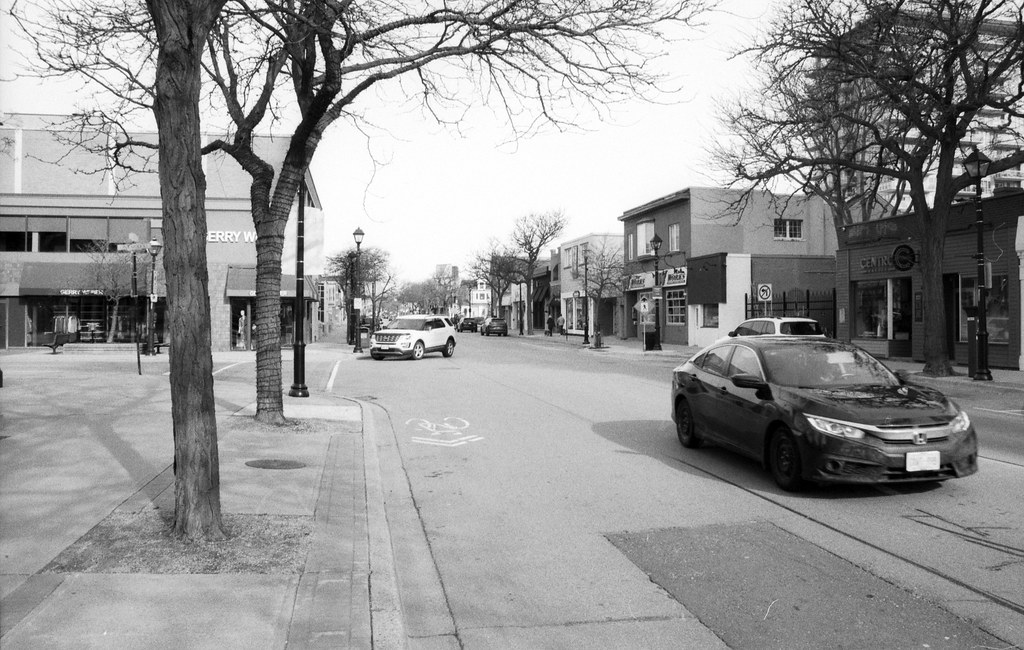
Canon EOS 3000 – Canon Lens EF 28-80mm 1:3.5-5.6 II – Arista EDU.Ultra 200 @ ASA-125 – Adox HR-DEV (1+35) 10:45 @ 20C
What we call Lake Ontario today, Hamilton Harbour, and the once dense forests and fertile soil of the Niagara Escarpment have attracted human civilisation and settlement for thousands of years, first by the Attiwonderonk, who were wiped out by the Haudenosaunee, who in turn were driven away by the Mississaugas. The French were the first Europeans to set foot in this part of the world. In 1669, Rene-Robert Cavalier, or Sieu de La Salle, landed in La Salle Park. European wars would shift the European power in the region to the British. Their battle with rebels in the thirteen colonies yielded loyalist Europeans and Indigenous peoples who, in payment for their service, the Crown arranged a series of treaties to purchase land from the Mississaugas. While the earliest settlement of what is today Burlington started in 1784, Treaty 3 in 1792 began a series of such land treaties to secure new land for colonisation. Upper Canada’s first lieutenant-governor, Sir John Graves Simcoe, would assign the name Burlington Bay to the area upon his first visit in 1792. While the British loyalists would settle, an Indigenous ally, the Mohawk War Chief, Thayendagea, would receive a large tract in downtown Burlington today under Treaty 8. Thayendagea would arrive in 1802, building a grand Georgian-style house with a view into the bay. He and his family lived here until he died in 1807, and then his family sold or donated sections of the Brant Tract. Among those who purchased sections was James Gage; he would establish a wharf at the foot of Rambo Creek, using the creek to drive a saw and later grist mill and begin a townsite survey. The small settlement took Wellington Square, and a second small settlement, known as Port Nelson, sprung up further east. Both settlements engaged in active trade with the rest of the province, taking advantage of the rich timber and later agricultural resources, shipping them out from a forest of docks and wharves into the lake. Both settlements flourished throughout the early century, especially after the Anglo-American War of 1812. The area saw little combat but a rather interesting naval engagement, the Burlington Races 1813. While the collapse of the grain trade would be a setback to the region, the rich soil and timber resources would allow the local economy to thrive. The opening of the Great Western Railway branch between Hamilton and Toronto through the small village of Freeman allowed for faster and further reach of local products and for secondary agricultural industries to spring up. In 1873, Port Nelson and Wellington Square merged to form Burlington and, a year later, absorbed Freeman into the village. A second railway, Hamilton & Northwestern, passed through the village’s core in 1876 and would eventually provide access to the Canadian Pacific Railway a decade later. However, both would become part of the greater Grand Trunk Railway within a decade. By the 20th Century, Burlington proved to be a happening place. This was primarily thanks to The Country Club, a mix of entertainment venues, hotels, and country clubs for gentlemen. While the wharves on the lake had fallen out of favour, the railway continued to send goods and passengers as far west as Chicago and east as Montreal. Incorporation as a town happened in 1914, with a new town hall opening and the city boasting a public library, newspaper, several hotels, churches, and factories. Like other towns, villages, and cities, Burlington did their part for the war effort during World War One, and the Country Club saw use as a convalesces hospital from 1917 to 1919; it returned to its original purpose only to be burned down in 1925. A new brick structure was quickly built. During the mid-century, Burlington saw a significant boom; the Brant Inn became a swinging hot spot for big-name entertainment. The Middle Road (QEW) has almost limitless power from the new hydroelectricity generators in Niagara Falls. In the post-war, Burlington annexed Aldershot and the remainder of Nelson Township, and a proper hospital, Joseph Brant Hospital, opened in 1961. In 1967, the last cash crop farm closed (where Burlington Centre sits today). Incorporation as a city came in 1974. However, through the 1980s and 1990s, many former industries began to scale back, and the city embarked on a grand scheme to revitalize the downtown area. This kicked off in the early 21st century with the creation of Spencer Smith Park, the reconstruction of the Joseph Brant House (itself a rebuilding from the 1930s) and the opening of a pedestrian pier on the lake shore.
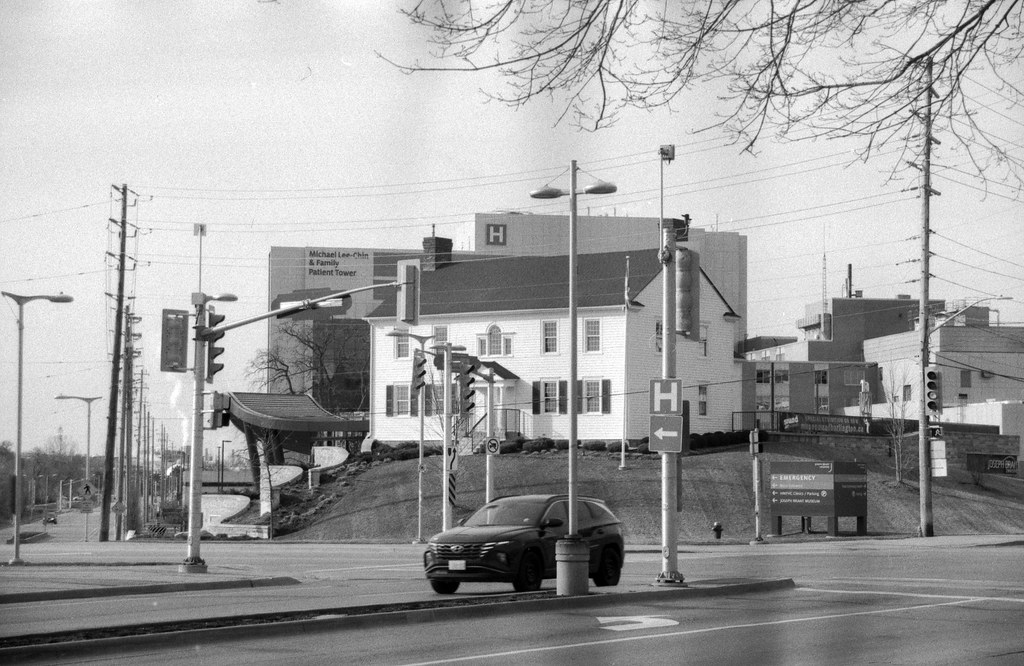
Canon EOS 3000 – Canon Lens EF 28-80mm 1:3.5-5.6 II – Arista EDU.Ultra 200 @ ASA-125 – Adox HR-DEV (1+35) 10:45 @ 20C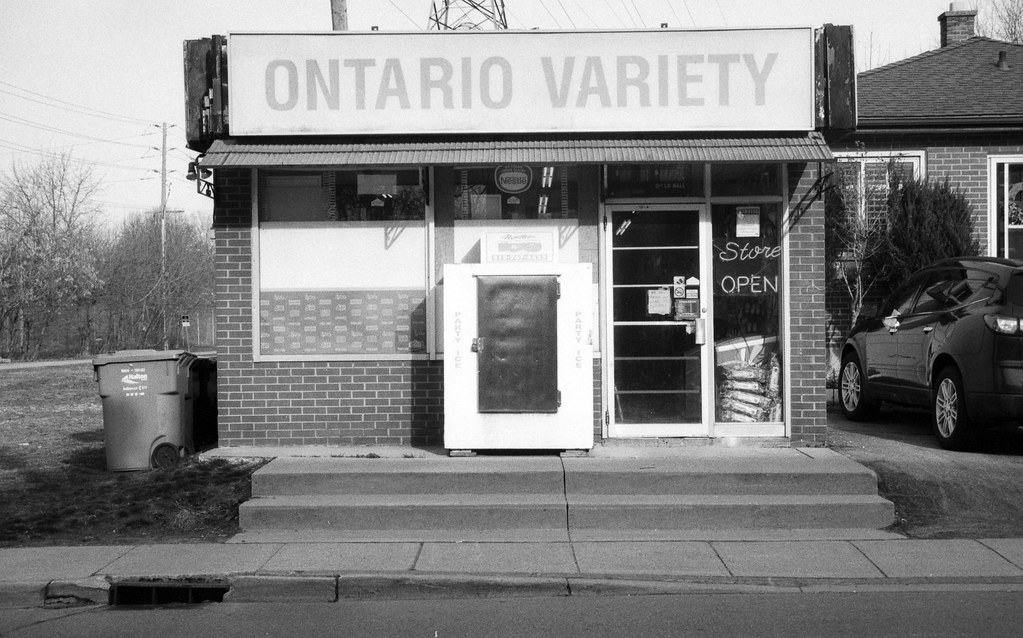
Canon EOS 3000 – Canon Lens EF 28-80mm 1:3.5-5.6 II – Arista EDU.Ultra 200 @ ASA-125 – Adox HR-DEV (1+35) 10:45 @ 20C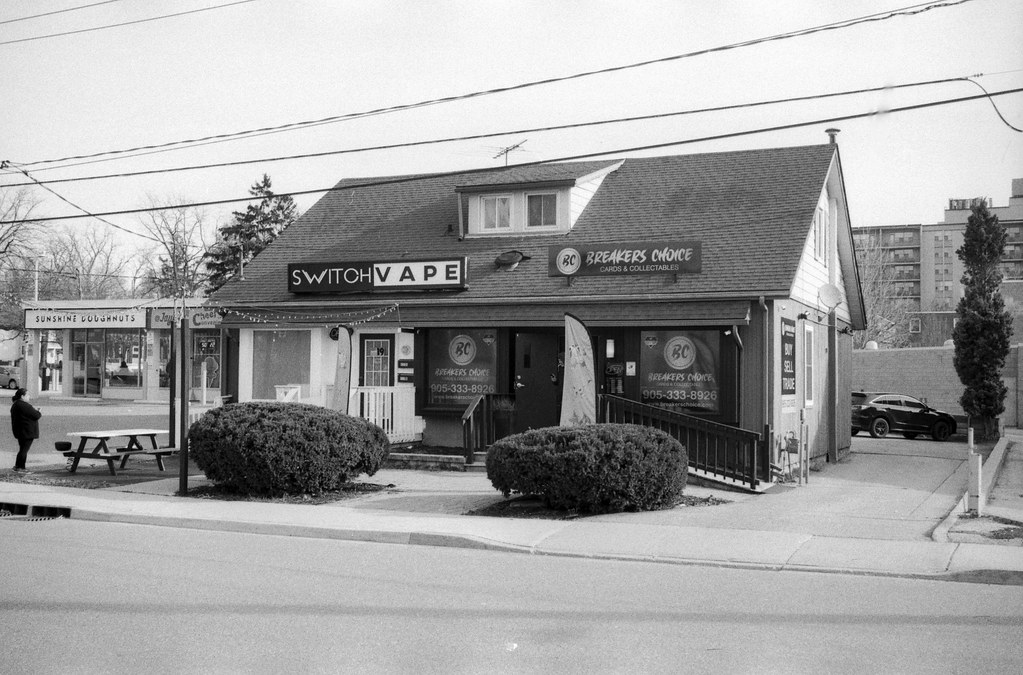
Canon EOS 3000 – Canon Lens EF 28-80mm 1:3.5-5.6 II – Arista EDU.Ultra 200 @ ASA-125 – Adox HR-DEV (1+35) 10:45 @ 20C
Canon EOS 3000 – Canon Lens EF 28-80mm 1:3.5-5.6 II – Arista EDU.Ultra 200 @ ASA-125 – Adox HR-DEV (1+35) 10:45 @ 20C
The biggest problem with Burlington is that there is no easy route to hit up all the interesting buildings through the historic downtown, so it was a matter of picking a route that would yield the biggest hit rate for the roll without having to backtrack too often. I made the choice to park near Sunshine Doughnuts and focus on the areas on the eastern side of Brant Street. Now, I’ve visited Burlington many times before so I already had a list in my head of items I wanted to capture before even arriving. Like other historic communities I wanted to include items that are of historical significance to the community itself. I’ll admit, it was hard to choose what to include and what to leave behind, especially because I had a high hit rate this month keeping and scanning 24 of the 25 frames.
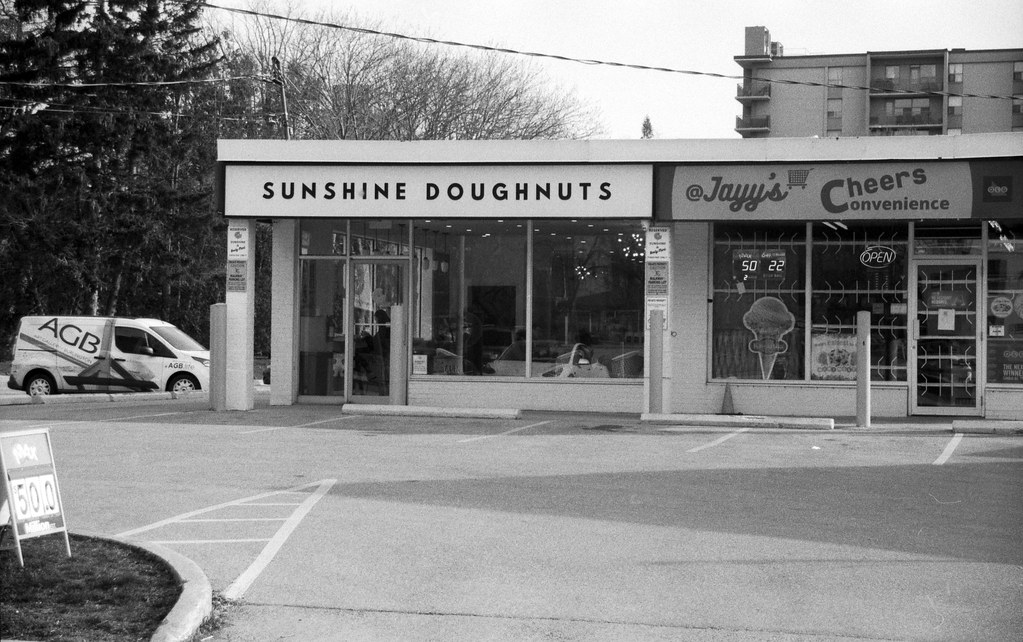
Canon EOS 3000 – Canon Lens EF 28-80mm 1:3.5-5.6 II – Arista EDU.Ultra 200 @ ASA-125 – Adox HR-DEV (1+35) 10:45 @ 20C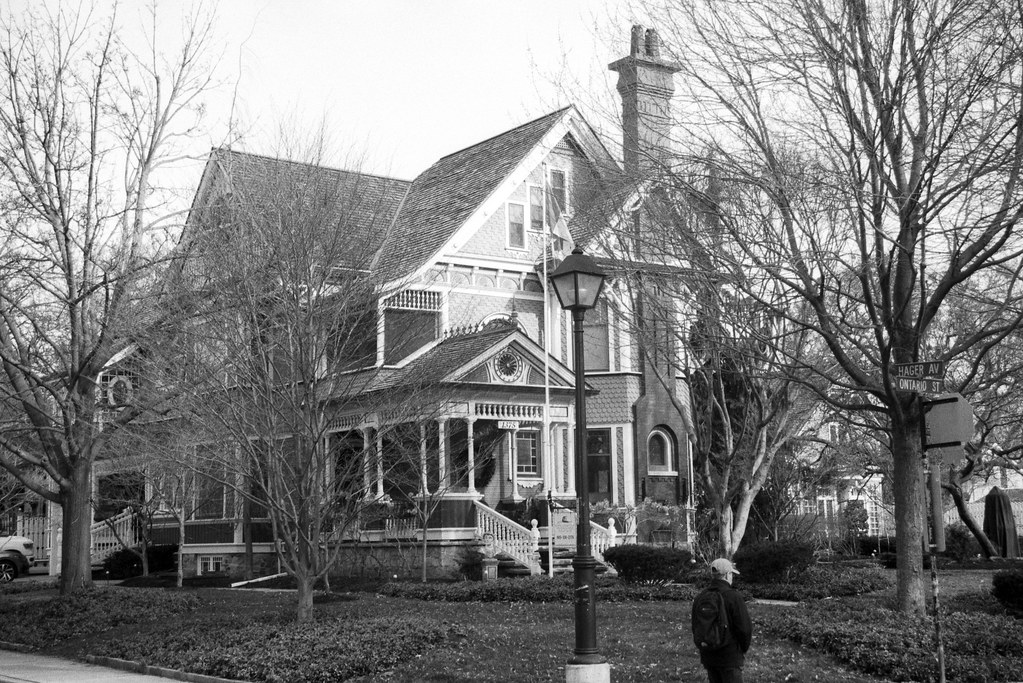
Canon EOS 3000 – Canon Lens EF 28-80mm 1:3.5-5.6 II – Arista EDU.Ultra 200 @ ASA-125 – Adox HR-DEV (1+35) 10:45 @ 20C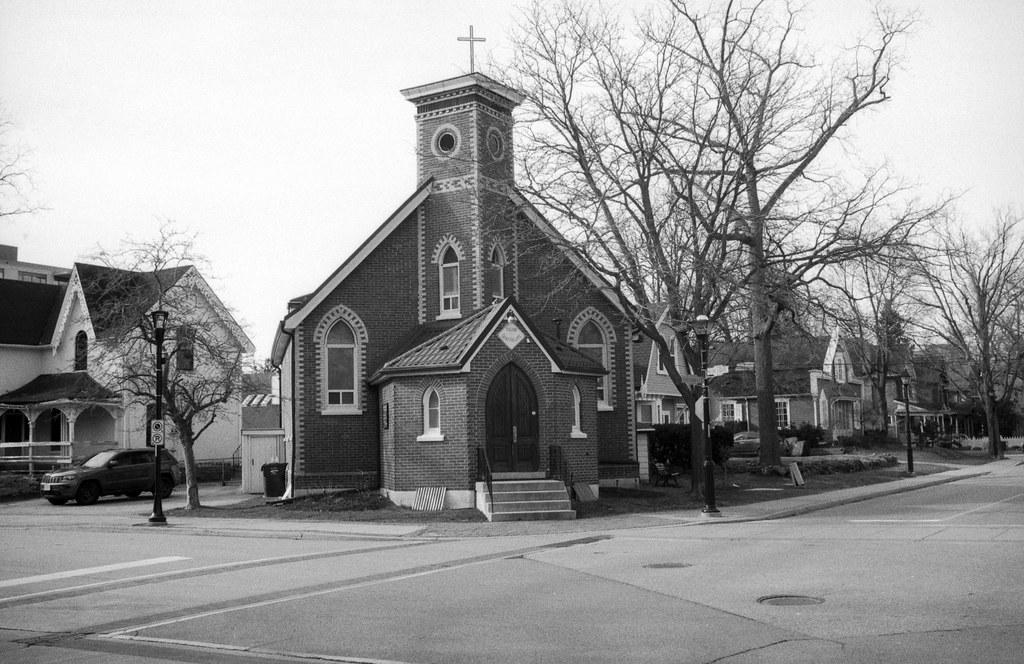
Canon EOS 3000 – Canon Lens EF 28-80mm 1:3.5-5.6 II – Arista EDU.Ultra 200 @ ASA-125 – Adox HR-DEV (1+35) 10:45 @ 20C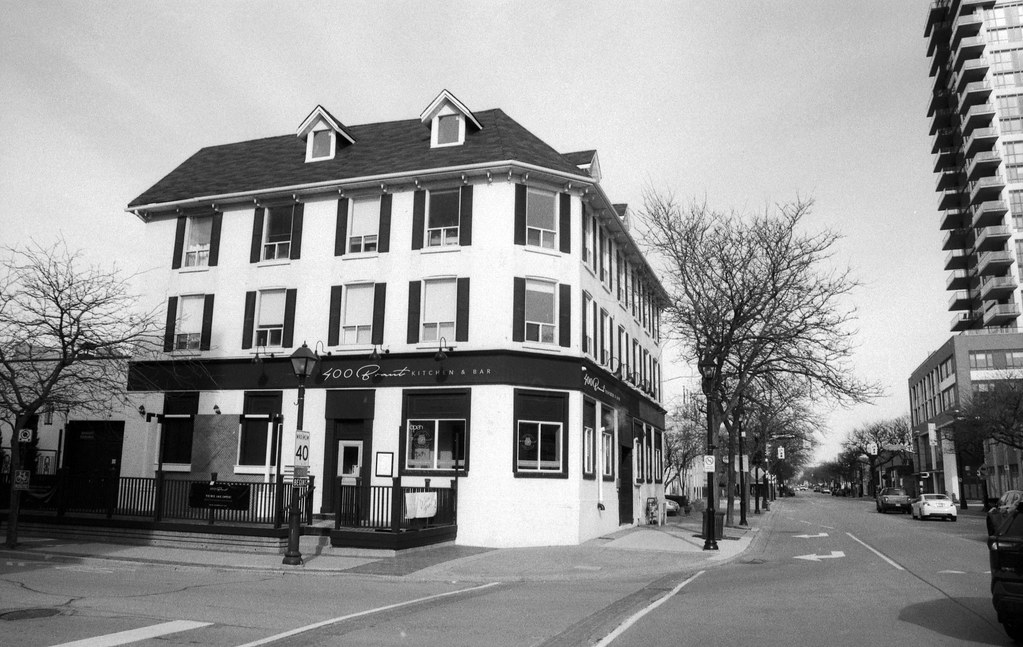
Canon EOS 3000 – Canon Lens EF 28-80mm 1:3.5-5.6 II – Arista EDU.Ultra 200 @ ASA-125 – Adox HR-DEV (1+35) 10:45 @ 20C
Because I was shooting in an urban setting and always needed to get the big picture, I returned to the kit lens for April, shooting the 28-80mm and using the zoom function to compose my shots better. I also over-exposed the film by two-thirds of a stop, shooting at ASA-125. The reason for that is the developer I picked for April, Adox HR-DEV. I had two developers waiting in the wings for this month, HR-DEV and Diafine, and it all came down to what the light was like on the day we went out. Thankfully, it was a beautiful early spring morning, so I went with the more obscure developer. Adox HR-DEV is designed to deliver the best results from the HR-50 film stock from Adox, a modified version of the venerable Agfa Aviphot 80. During my Adox HR-DEV review, I shot a Fomapan 200 roll. I loved the results and wanted to see what a 35mm roll would look like with the same development. Right out of the tank, the negatives looked excellent, with good density, and the hits kept coming through the scanning process. The results were close to what I had gotten with the 120 rolls, with a sound reduction in grain and excellent tonality and contrast. I had to adjust the scan to get the desired results. While I usually will reduce times by 10% to compensate for the constant rotation I used for development, I would increase that to 15% if I used this combination in the future to help cut the density slightly.
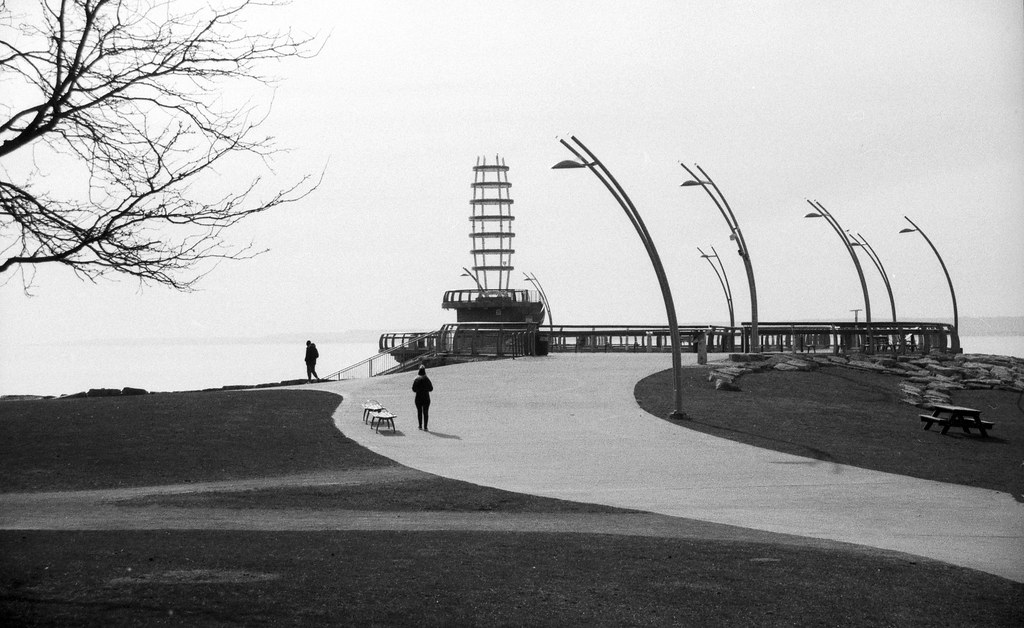
Canon EOS 3000 – Canon Lens EF 28-80mm 1:3.5-5.6 II – Arista EDU.Ultra 200 @ ASA-125 – Adox HR-DEV (1+35) 10:45 @ 20C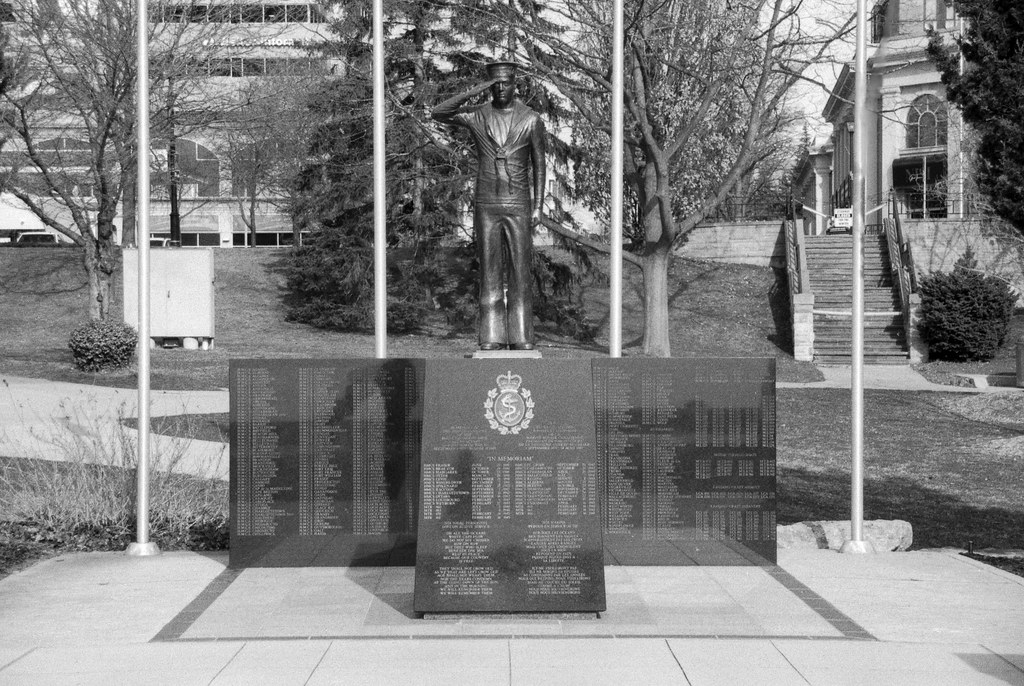
Canon EOS 3000 – Canon Lens EF 28-80mm 1:3.5-5.6 II – Arista EDU.Ultra 200 @ ASA-125 – Adox HR-DEV (1+35) 10:45 @ 20C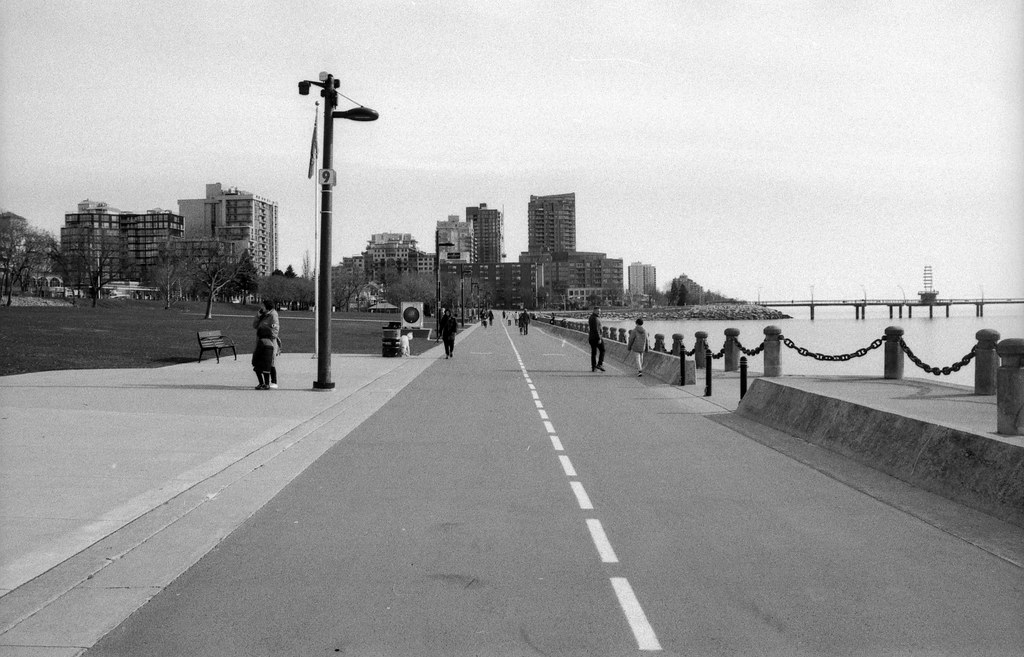
Canon EOS 3000 – Canon Lens EF 28-80mm 1:3.5-5.6 II – Arista EDU.Ultra 200 @ ASA-125 – Adox HR-DEV (1+35) 10:45 @ 20C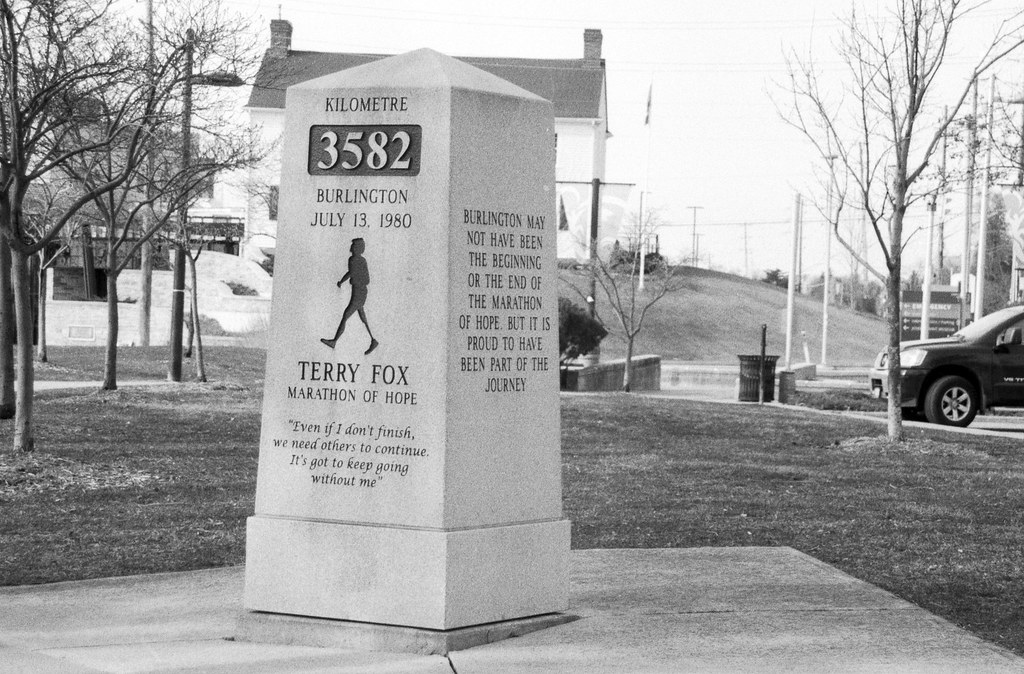
Canon EOS 3000 – Canon Lens EF 28-80mm 1:3.5-5.6 II – Arista EDU.Ultra 200 @ ASA-125 – Adox HR-DEV (1+35) 10:45 @ 20C
One of the more interesting things is that while the main street is sadly lacking in many of the early historic buildings, although some do survive despite being threatened in the past. That doesn’t make Burlington a bad place for photography especially if you enjoy historic buildings as I do. But if you go into the side streets you are presented with a wealth of historic homes and architecture from the mid to late 19th Century and even some grand buildings from the early 20th Century. Besides being the place where I was born, Burlington has some excellent small businesses, such as my go to camera shop, Burlington Camera, the amazing Sunshine Doughnuts and Son of A Peach Pizzeria. My barbers at Village Cigar & Barber Shop and of course Tamp Coffee. Next month we’ll be staying with the urban theme and heading a little bit further along the lake and heading into the heart of Hamilton, Ontario!